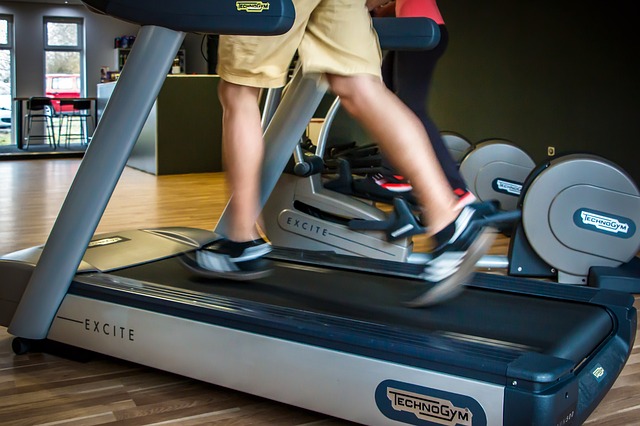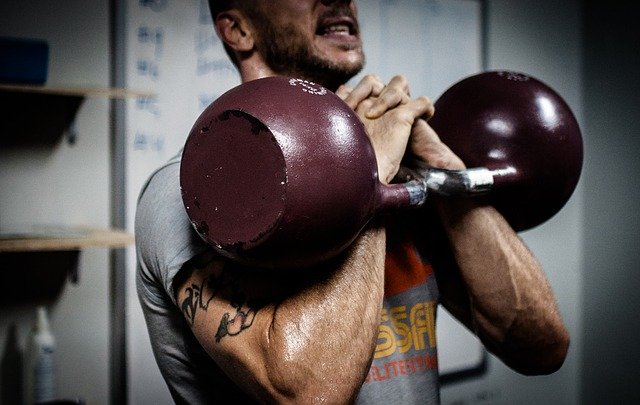Pavel Tsatsouline is the man responsible for popularising the kettlebell in the United States, he has also helped train US Marines using techniques he learned when training with Soviet Special Forces (Spetznaz).

He has a degree in Sports Science that he received in Minsk, Belarus. He has authored numerous books on kettlebell training as well as strength training.
Recently, Pavel talked about building endurance on the Joe Rogan show.
According to Pavel there are two forms of endurance, cardiovascular endurance and muscular endurance, and in this interview, Pavel is focusing on cardiovascular endurance.
There are several ways to build endurance, but some methods are more effective than others.
How to Develop Cardiovascular Endurance

The most effective way to develop cardiovascular endurance is with low intensity steady state exercise.
For example, jogging on a treadmill, cycling on an exercise bike, keeping the intensity the same throughout.
The reason for this is that low intensity steady state is fantastic at stretching the heart muscle, which can allow it to pump blood more effectively around the body and can increase stroke volume (the amount of blood pumped per heartbeat).
You can get good results with low intensity steady state cardio, up until your heart rate reaches near-maximal levels.
Around 90% is where the heart begins to stop stretching. Near-maximal cardio is still effective at building cardiovascular endurance, but it comes with significant drawbacks.
High Intensity Interval Training, also known as HIIT is currently beloved the world over, it appeals to our inbuilt desire to get results as fast as possible using a clever strategy.
HIIT has many benefits, it is efficient, burns a lot of calories, and can reduce the risk of chronic injuries that can affect long-distance athletes.
However, HIIT is massively overused. As Pavel points out, HIIT can be just as effective as LISS when it comes to building cardiovascular endurance, but it is a very demanding form of exercise.
Imagine you wanted to learn how to fire a rifle, and on your first day you were given an AK47. There would be carnage. It is the same with HIIT, it is very effective when performed by trained individuals, but most people are not trained.
HIIT is very demanding on the heart, and for many people with poor coordination (i.e. anyone who hasn’t been exercising regularly for at least 6 months) there is a high risk of injury. Particularly if that HIIT session involves weights or plyometrics.

Pavel also addresses the age old belief that lifting weights is an effective way to build cardiovascular endurance. You’ve probably heard the joke where a guy is lifting weights and is asked what they do for cardio “I just lift weights faster” he responds.
What you need to understand is that lifting weights can improve cardiovascular endurance, but only in very specific ways. Typical static exercises such as heavy barbell squats will cause your heart to grow, but Pavel claims that the heart will not stretch but thicken. Meaning that it will increase stroke volume, but not increase your cardiovascular endurance.
This makes sense if you think about it, particularly if you’ve ever watched a 300lb powerlifter get out of breath running for a bus. In layman’s terms, it’s a different form of training. Cardiovascular endurance is built through dynamic exercises such as running, cycling, and swimming.
However, it can also involve weight training. You just need to lower the weights and increase the repetitions. While heavy squats for 2-3 reps per set may not improve your endurance, very lights squats for 30, 40, or 50+ reps would be performed at a fast enough rate to qualify as a dynamic exercise.
The Talk Test

One of the most important aspects of building cardiovascular endurance is getting the intensity right, because you want to ideally keep your heart rate around 50-60% of your maximal heart rate you need to have a system for identifying when that is (or use a heart rate monitor).
Pavel mentions that the talk test is one of the most effective ways to gauge intensity. If you are able to talk in short sentences, then you are in the right zone for cardiovascular endurance. If you can talk in long sentences without any breathlessness, then you are probably not training at a high enough intensity. Conversely, if you are unable to complete short sentences then you are training at too high an intensity for maximal results.
Remember, the intensity that you are training at is not an indication of how hard you are working. A 60m sprint is much higher in intensity than a marathon, but a marathon requires more work. If you were looking for other benefits then training at 90% of your max heart rate could be beneficial, but for cardiovascular endurance you want lower intensity for longer duration.
Repeat Training

Pavel finally brings the conversation round to repeat training, a form of cardiovascular endurance training that was created by Dr Yuri Verkhoshansky (the creator of plyometric training). This form of training involved measuring lactic acid levels so that you can train just below the lactic acid threshold.
The idea is that you pick a specific exercise and perform it for as long as you can until you begin to reach your lactic acid threshold. Pavel uses the example of sprinting for 5-7 seconds and then walking, and then sprinting again. So far, so similar to interval training. But instead of using time as a factor, you are using your lactic acid levels. Staying right at the threshold.
So you sprint just before your lactic acid reaches the threshold, and then you walk until your lactic acid levels appear to lower, and then you sprint again.
Following this method, you can prolong a sprint for upwards of 40 minutes. By staying around your lactic acid threshold, you can improve the mitochondria in your muscle cells and help to increase your cardiovascular endurance.